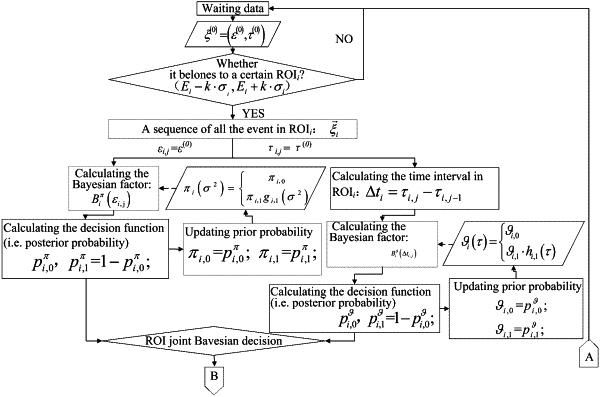| CPC G16C 20/20 (2019.02) | 20 Claims |

|
1. A nuclide identification method, comprising:
receiving, at a computer, the time-energy information of a ray from a detector, and performing following steps:
determining whether the ray belongs to one of Region of Interests (ROIs) based on energy information in the time-energy information of the ray;
describing a sequence of all nuclear detection events in the ROI when the ray belongs to the one of the ROIs;
determining an energy Bayesian factor based on energy information in the described sequence of all the nuclear detection events;
determining an energy decision function based on the energy Bayesian factor;
determining a time interval in the ROI based on time information in the described sequence of all the nuclear detection events;
determining a time Bayesian factor based on the time interval;
determining a time decision function based on the time Bayesian factor;
combining the energy decision function and the time decision function to obtain a joint decision function of the ROI;
retrieving a potential nuclide corresponding to the ROI based on a characteristic γ ray corresponding to the ROT, and combining joint decision functions of respective ROIs corresponding to the retrieved nuclide to obtain a nuclide joint decision function;
determining whether the retrieved nuclide exists based on the nuclide joint decision function; and
outputting a result that the retrieved nuclide exists in respond to a determination that a value of the nuclide joint decision function is less than or equal to a first predefined value; or a result that the retrieved nuclide does not exist in respond to a determination that the value of the nuclide joint decision function is greater than or equal to a second predefined value, wherein the second predefined value is greater than the first predefined value; or a result of failure in respond to a determination that the value of the nuclide joint decision function is greater than the first predefined value and less than the second predefined value.
|